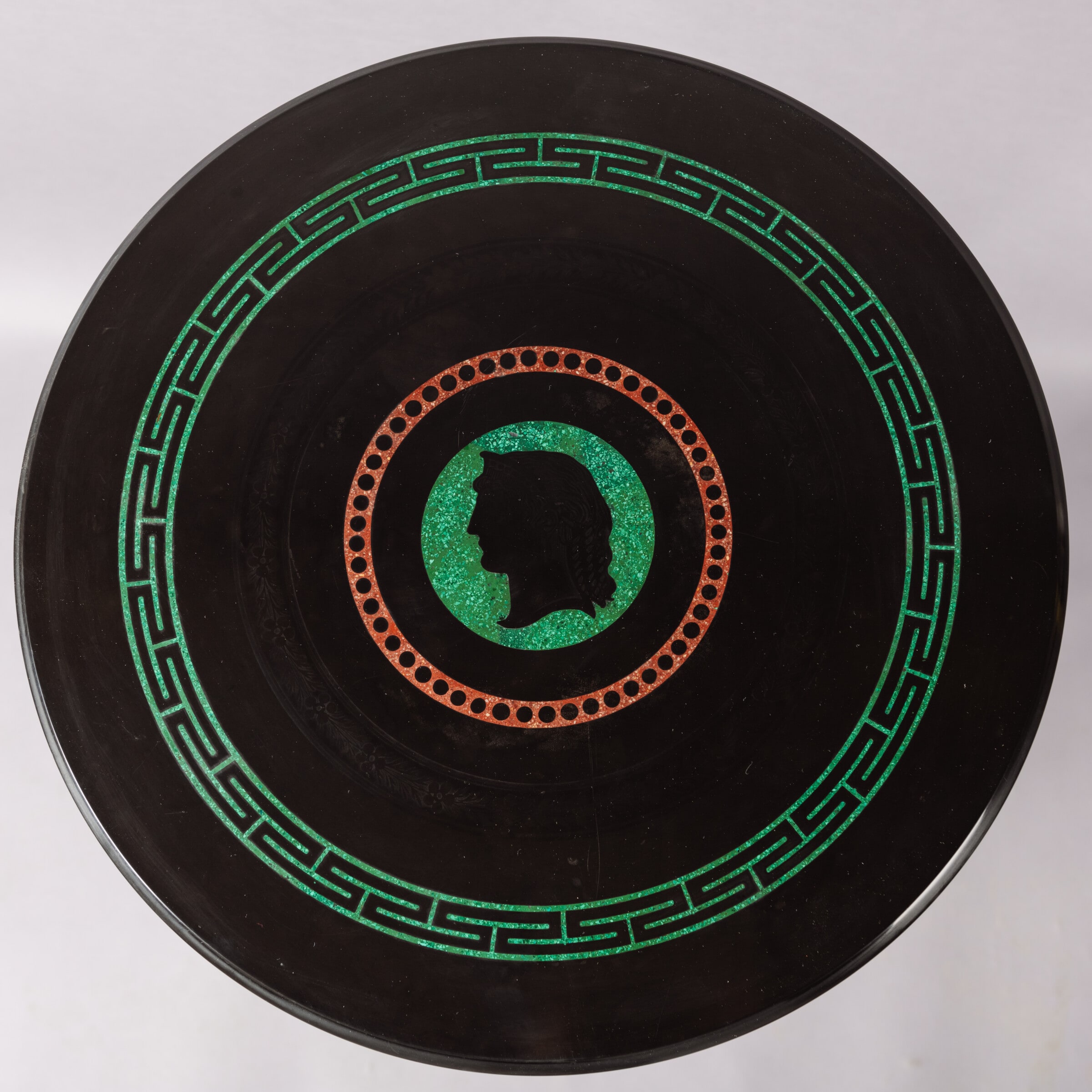Ferdinand Barbedienne
An Unusual Neoclassical Style Gilt-Bronze Gueridon With An Inlaid Black Marble Top, In the Manner of Ferdinand Barbedienne and Louis-Constant Sévin
£15,000
An Unusual Neoclassical Style Gilt-Bronze Gueridon With An Inlaid Black Marble Top, In the Manner of Ferdinand Barbedienne and Louis-Constant Sévin. This...
Dimensions
Height: 84 cm (34 in)Diameter: 48 cm (19 in)
Description
An Unusual Neoclassical Style Gilt-Bronze Gueridon With An Inlaid Black Marble Top, In the Manner of Ferdinand Barbedienne and Louis-Constant Sévin.
This unusual gueridon has a circular black marble top finely inlaid with concentric decoration of a Greek key border in malachite, an etched foliate band, and centred by a classical head in profile within a malachite surround; the tripod base is cast as three monopodia supports with chimerical heads, scrolling acanthus and terminating in paw feet.
French, Circa 1860.
Date
Circa 1860
Origin
French
Medium
Gilt-Bronze and Marble

Ferdinand Barbedienne (6 August 1810 – 21 March 1892) was a French metalworker and manufacturer, who was well known as a bronze founder.
The son of a small farmer from Calvados, he started his career as a dealer in wallpaper in Paris. In 1838 he went into partnership with Achille Collas (1795-1859), who had just invented a machine to create miniature bronze replicas of statues. Together they started a business selling miniatures of antique statues from museums all over Europe, thus democratising art and making it more accessible to households. From 1843 they extended their scope by reproducing the work of living artists and also diversified by making enamelled household objects. With the outbreak of the Franco-Prussian war in 1870 the firm briefly had to switch to cannon founding owing to the shortage of metals but resumed business afterwards. Following Barbedienne’s death in 1892, he was buried in the Père-Lachaise cemetery and the firm was carried on by his nephew Gustave Leblanc until 1952.
Among the principal artists reproduced by the firm were Antoine Louis Barye and Auguste Rodin.













 Print
Print


